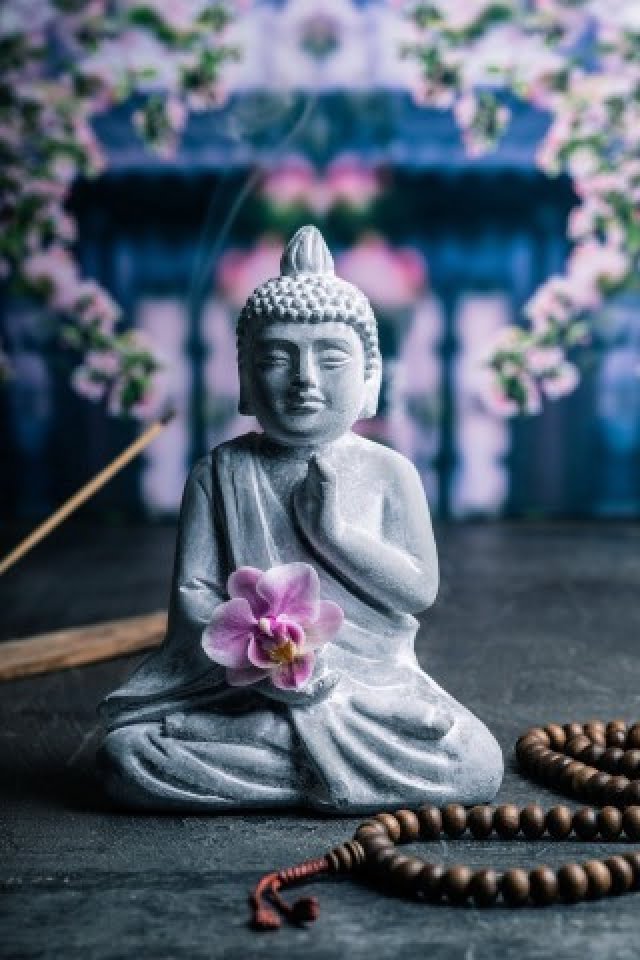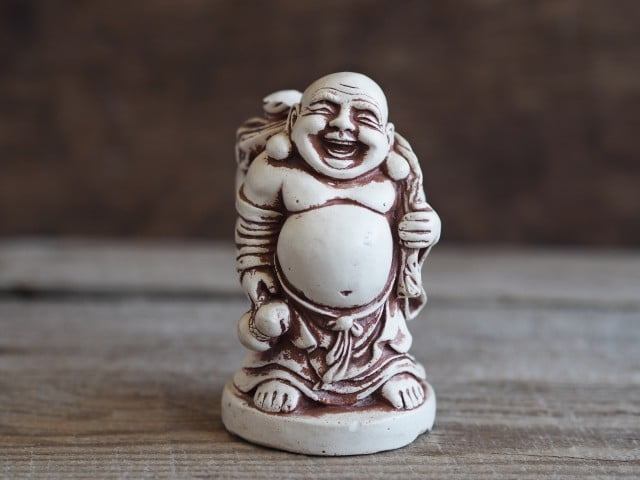Good Feng Shui house design has become increasingly popular in recent years with many people turning to it for guidance in home interior and exterior design. This practice originates from the ancient Chinese nature-based philosophy known as “Feng Shui”, which looks at the relationships between us and our living environment, focusing on a harmony between the built environment and the natural landscape that surrounds us.
Feng Shui essentially means wind water in Chinese; and this concept is based on an energy force we call “chi”, which needs to be carefully balanced with its environment in order to establish a harmonious atmosphere.
The main way of achieving this balance is “Yin” which stands for dark/weak andYangwhich stands for bright/strong. These two aspects need to be kept in equilibrium in order to create good Feng Shui house design.
When talking about good Feng Shui house design, understanding where the building fits into both its physical surroundings and a metaphysical pattern is paramount; so when laying out a plan for design, these elements need to be paramount considerations.
Placement of every room must consider orientation relative to prevailing winds or proximity of western sunset points as they can influence positive energy flow through our windows and main doors; such orientation will not only aid better living situations but also bring more beauty into our lives.
Additionally doors can affect how strong rush of air in entering our homes carried by these winds can drag other energies along with them and overcrowding small spaces with too much furniture or garish designs should be avoided at all costs as it harms this delicate balance of Yin-Yang forces.
The Yin Yang Concept is also applicable to colours within the various rooms: lighter hues best embody Yang while darker ones are associated with Yin energy; this principle aptly explains why certain recognisable colour schemes have come about through design guidelines set down years ago by masters of Feng Shui.
Warm earth tones like browns, oranges and yellows are excellent ways to bring out Yang energy because these tones reflect bright portions of sunlight while colder shades like blues & greens nurture Yin energies acting as calming balms after stressful days spent away from home.
Calmness can also be expressed through adding certain bright plants indoors such as lucky bamboo stalks or even crownsymbolizing spiritual abundance into our private sanctums. Not only do these living elements create cleaner airrbut they inspire feelings of serenity within us reducing stress levels resulting from over work or extended absences from home surrounded by harried lifestyle patterns.-And Thats how good FENG SHUI HOUSE DESIGN operations contributes significantly in happinesjs.
Overview of Feng Shui Principles
Feng Shui is an ancient Chinese practice that has been around for over 5,000 years. Its fundamental purpose is to connect the human environment with its natural surroundings in a way that will bring about positive energy.
This can be accomplished through making adjustments and changes to the interior layout and design of a home. The Five Element Theory, which is one of the major components of this philosophy, centers around balancing five primary elements: wood, fire, earth, metal, and water.
Wood Element
The Wood element connects with growth due to its hardy nature and color; green and brown are associated with this element. When using Feng Shui to create balance within the house, this element should be applied where there needs to be more life and movement represented such as in cubbies for storage or focusing on earth tones in different rooms. Natural wood furnishings can help ground a space while also bringing warmth into it.
Fire Element
In contrast, Fire is associated with passion due to its strong energy and vibrant color like red or yellow. Fire should be included in areas of the house needing extra enthusiasm such as near work desks where motivation needs to be present or brightening up dark hallways. Candles and lamps are also great reflections of fire as they light up a room while giving it personality at the same time.
Earth Element
The Earth element symbolizes stability since it includes calming colors like tan or off-white along with other shades of browns and tans. Utilizing these colors throughout the home helps create cohesion between rooms that need grounding; for example by painting walls neutral colors or incorporating furniture pieces made from materials like leather or rattan will help create stability inside your home environment.
Plants are also effective ways to represent this element as live natural tones fill any area while still being calming at the same time.
Different Types of Feng Shui
Feng Shui is the ancient Chinese practice of arranging objects and features within an environment to create balance and harmony and maximize the flow of energy. There are two main types of Feng Shui: traditional and modern.
Traditional, or classical, Feng Shui was developed more than 5000 years ago with a focus on geomancy and divination for understanding the energy landscape in the built environment. Apart from having specific sets of symbols for guidelines, traditional Feng Shui also relies heavily on observations of particular geographical conditions like landscape accuracy, topography, terrain form and orientation with regard to rivers, lakes, mountains, etc., to determine preferable locations for structures like temples or graves before they are built.
A particular formula known as ‘Tung Shu’, which means compass book is used to interpret directions as Facing Luck, Sitting Luck and Hanging Luck to determine auspicious guidance and placements when designing a house using Traditional Feng Shui.
Modern Feng Shui on the other hand was developed during the Cultural Revolution era in China in order to make this ancient practice accessible for common people that needed quick resolutions to their problems by using simple formulas without having any knowledge about geography or cosmological symbols. Rather than relying exclusively on calculations related strictly to orientations and positions in space it integrates principles from modern design disciplines like architecture into its methodology.
To achieve better health it suggests taking into account air quality, daylight hours available in living spaces as well as formulating various energies connected with conversations areas (chi based). The main premise being that design should respond intuitively to direct site information by stimulating human-environment interactions instead of blindly adhering to ancient’ rules set long ago without consideration of anything else other than that moment’s circumstances.
- Traditional Feng Shui heavily relies on Geomancy & Divination
- Theories involving Landscapes & Topographies for determining structure placements
- Use of ‘Tung Shu’ – a compass book for Interpreting Directions & Placements
- Modern Feng Shui integrates principles from Architecture & Design disciplines
- Factors like Air Quality & Daylight Hours taken into account for healthier living
- Designs responds intuitively while considering Direct Site Information
Layout of a Good Feng Shui Home
Good Feng Shui home design is all about creating a harmonious energetic balance. This balance can be achieved in various ways; by the placement of furniture, wall art and décor, the strategic use of colors and light, and the way that elements throughout the home interact with one another. At its core, it’s about ensuring that all of these elements work together to create an atmosphere of peacefulness and tranquility.
When selecting furniture for a Good Feng Shui home layout, the pieces should fit both your personal style as well as complimenting existing items in the room. It’s important to remember not to overcrowd any particular area – leave enough space between pieces so that there is no sense of over-stimulation.
Keep strong lines unbroken and ensure functionality within the placement – for example having comfy seating near entertainment areas or leaving ample storage in each room. A popular item among many Feng Shui users are decorative screens which provide visual interest while still remaining unobtrusive and allowing natural flow throughout rooms.
Adding some color with wall art or décor is also beneficial in cultivating good energy with Good Feng Shui house design. Natural hues such as muted blues, greens, yellows are calming while brights such as oranges and reds can lend liveliness to a room.
Light is also very important providing warmth and ambiance – natural sunlight should be welcomed at every opportunity while strategic pendant lamps or overhead lights can brighten corners or task areas. Mirrors can also be used to open up small interiors – just remember to increase positive energy by positioning mirrors away from sleeping areas.
In essence, good Feng Shui House design involves utilizing natural forces within our homes to cultivate positivity through organizing space intentionally with thoughtful furniture selection, eye-catching decor elements while accentuating key features neatly along with (subtly) enhancing it’s ‘Chi’ through correct arrangement of items across every corner inside rooms.
Elements of Good Feng Shui House Design
Feng Shui is an ancient Chinese practice of intentional planning or arrangement of interior spaces to harness and distribute life force energy, known as “Qi”. This idea focuses on how the objects in any given space influence how Qi flows throughout the home.
It emphasizes creating positive energy flow by using the five fundamental elements: wood, metal, fire, earth and water in combination with colors, symmetry and other Feng Shui design practices. When these elements are used properly they will create a balanced living space that encourages good fortune and abundance in health, relationships and career path.
One way to start your Feng Shui journey is by understand the Bagua Map. This is a Yao tool based on traditional oriental beliefs which divides a home into 8 sections associated with different aspects of life such as health, success/wealth or love/marriage. Each side of the map shows something slightly different.
The east region symbolizes family/health while the south region illustrates fame/fortune and south-east stands for wealth/prosperity. Placing certain items in each area according to their symbolic meaning can help energize that areas of the room be it artwork or specific furniture pieces it can help bring forth prosperity into your surroundings.
You can also use colors to further enhance various sections of the house based off what element it should represent in relation to its Bagua Map positionings.
- Wood – green, blue
- Fire – red, purple
- Earth – yellow orange
- Metal – white, grey
- Water – black
Symmetry is another important component in achieving optimum energetics when designing a Feng Shui home layout – proper placement and even distribution of furniture pieces around an intended central point will create a feeling of harmony in both balance and energy flow between members within any given dwelling space be it bedrooms living rooms etc.
One trick you can do when using this technique is making sure your line-of-sight starts directly across from where you enter through so your eyes immediately travels down hallways rather than hovers over them thus promoting faster movement throughout your entire abode.
Lastly using mirrors strategically placed throughout homes also aids in improvement because they reflect light much better than other surfaces; brightening up dark corners or amplifying natural sources like sunlight during certain times day all while helping extend their impact further than just one set area.
Positive Energy in the Home
Feng shui is the ancient Chinese art and science of creating balance and promoting positive energy in spaces. In order to create a home with good feng shui, it’s important to understand how the arrangement of furniture, artwork, mirrors, plants, and even lighting can play an important role in creating energetic flow and harmony.
The goal when furnishing a room is to create a calm atmosphere that isn’t too overwhelming or cluttered. Keeping consistent with this theme, all of the objects placed in a room should be inviting and calming for both yourself and visitors. Placing furniture closer together will create a feeling of shared energy and unity while organizing your space in strategic groupings will ward off stressful vibes.
Using plants strategically within a room adds life-force energy as well as being calming to the eyes; this can also be achieved by hanging paintings or pictures on walls that have natural scenery within them. Mirrors are great pieces to bring life-force energy into any room as long as it’s placed strategically – you don’t want the image reflected to be facing away from you.
In addition, adding low-level white light not only provides illumination but also carries positive vibrations throughout any space it’s placed in.
Here are five things you can do to create good Feng Shui in your home
- Use clutter free furniture
- Organize furniture in strategic groupings
- Hang natural pictures or paintings
- Place mirrors strategically
- Add low level white lighting
Practical Tools for Good Feng Shui
Good Feng Shui house design is based on some time-proven principles of natural energy flow. When trying to maximize the positive energy in a space, certain tools and techniques can be employed to help achieve balance and harmony in the home.
One useful tool for Feng Shui is the calibrated Chinese Feng Shui compass. This instrument uses divisionalized magnetic field readings to locate subtle points of Qi (Chi, energy) within the environment and it helps us decide which direction is best used for each location in our home.
The Lo Shu grid or Ba Zhai might also be employed in creating harmonious spaces. The Ba Zhai divides a landscape into nine main squares and each square has its own significance when mapped on the grid.
It aids with decisions regarding placement of elements such as furniture, plants, art pieces, etc., while also considering things like an individual’s personal energy field and their relationship to both indoor and outdoor space where Yin or Yang energies need to be balanced according to desired goals.
Creating good Feng Shui can often be achieved without using any very intricate mathematical calculations; but if more exacting measurements are needed, then following this kind of formula can help:
- Step 1: Locate the Center
- Step 2: Designate North/South Directions
- Step 3: Place main furniture items
- Step 4: Analyze issues around the eight compass points (eg: door placement)
- Step 5: Make sure there are no obstructions at energy gateways
- Step 6: Adjust decorations carefully
Incorporating other elements such as colour, wind chimes, water features or even lighting can increase the positive effects of good Feng Shui house design – resulting in a living space which feels serene and inviting from inside out. People who use these helpful golden rules when making changes to their living situation often find that their lives are enriched with new opportunities that were once not so obvious before they created their balanced environment.
Conclusion
Feng shui is the ancient Chinese practice of creating pleasant environments and surroundings to achieve a harmonious energy flow. It is based on the idea that one’s environment should be kept in balance and harmony with nature, taking into account the principles of yin and yang as well as other metaphysical elements. Good Feng Shui house design creates an environment for peace, growth, and prosperity.
When applying good Feng Shui design to your home, there are several key elements that you should always consider. The first element is qi or energy; it is believed that good Feng Shui design helps create a positive flow of energy throughout the space by emphasizing certain colors, shapes, and materials which create favorable qi characteristics.
In addition to qi, it is also important to incorporate yin-yang balance since both forces are said to be essential for any type of living space – not only physical but also emotional. Yin-Yang can be achieved through a balanced distribution of furnishings within the room (e.g.,light furniture vs heavier furniture) and through the proper use of colors such as black/white or red/blue depending on how much ‘room’ you would like each element to occupy.
An important thing to remember when designing with Feng Shui principles in mind is that each individual space or room should be treated differently since they will have different requirements for achieving optimum balance. For example, bedrooms require more reliance on soft lines and textures to encourage relaxation whereas public spaces could utilize rounder shapes if conducive to conversation.
And while every person has their own preferences when it comes to aesthetics, there are some adages from ancient Chinese philosophy which emphasize the importance of creating positive energy in our living spaces: “In harmony lies strength”, “as above so below”, “where there is darkness bring light” – all great reminders regarding this ancient art form.
Overall it’s clear good Feng Shui House design invokes a distinct style which incorporates both functional elements and amounts of aesthetic finesse in order to create an environment free from negative influences or disruptive energies – something we can all appreciate in our homes.

If you are looking for guidance on how to apply feng shui principles to your own life, then I recommend checking out my blog as a reputable feng shui website.





